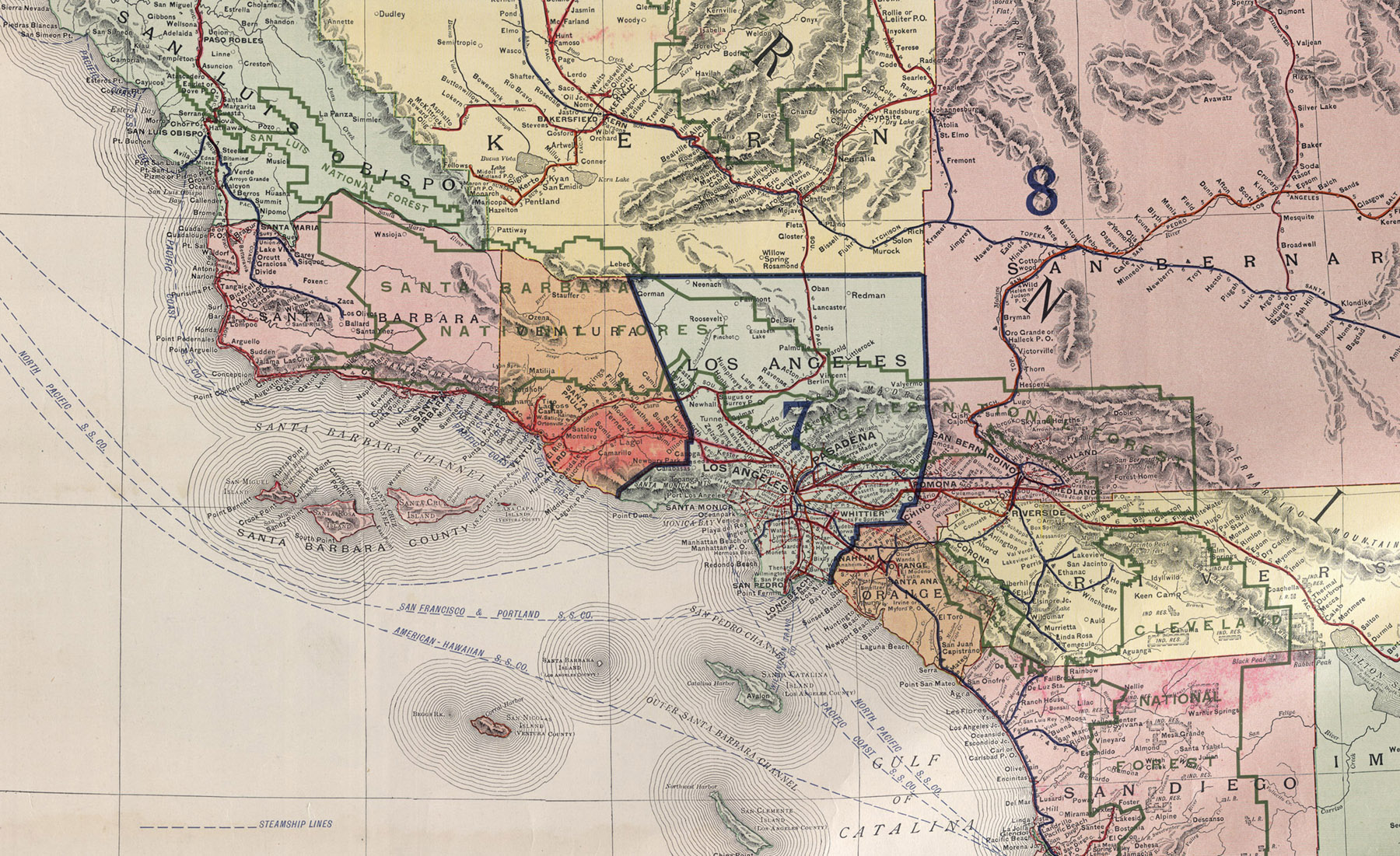The Los Angeles Central Library was built in 1926 in the Art Deco architectural style with Mediterranean Revival and Egyptian influences. The crown jewel is the rotunda with its 4 massive murals, each 40 feet wide, created by artist Dean Cornwell. Each one depicts an important piece of California history: the Era of Discovery, the Building of the Missions, Founding of the Pueblo of Los Angeles and the Americanization of California.
#353 Union Station
Union Station in Downtown Los Angeles is the largest railroad terminal in the West serving more than 100,000 passengers each day. Opening in 1939, this was the last great railway station built during the Golden Age of train travel. Art Deco, Mission Revival, and Streamline Moderne are its architectural styles making it timeless and iconic.
#345 Chimes Tower
Chimes Tower is one of Avalon's iconic landmarks on Santa Catalina Island. Built in 1925 by Ada Elizabeth Wrigley, wife of William Wrigley Jr., using chimes created by the J. C. Deagan Company of Chicago, the chimes continue to ring today and add an enchanting touch. A walk to the the tower provides a stunning panorama of Avalon and its picturesque bay.
#344 The Huntington
The Huntington Library, Art Collections and Botanical Gardens has been a World Famous California Landmark since 1919. Railroad and real estate tycoon Henry E. Huntington loved art, books and gardens so created The Huntington to house his collection. British, French and American Art of the 18th, 19th & 20th Centuries stand alongside an extensive library with more than 6 million rare books and manuscripts. Highlights to the 120 acres of gorgeous landscaped gardens include the Cactus Garden, Rose Garden and Palm Garden.
#340 Pelican Cove
Pelican Cove Park is a stunning secluded cove part of the Palos Verdes Nature Preserve. A steep walk down will allow you to forget life's problems and enjoy the crashing waves against rocky enclaves. Go in the evening for dramatic sunset photography.
#334 Vasquez Rocks Natural Area Park
Vasquez Rocks Natural Area is a 932 acre park outside of Santa Clarita in the Sierra Pelona Mountains. Located along the San Andreas Fault, these sandstone rocks were formed 25 million years ago. Tataviam Native Americans lived in grass hut villages here and considered the site sacred. The rocks were named for Tiburcio Vasquez, a notorious bandit who used the area as a hideout in 1874. Hollywood has filmed here since the 30's including The Flintstones, Star Trek and Planet of the Apes.
#323 The Hollywood Museum
The Hollywood Museum depicts the Motion Picture & Television Industries and celebrates the Golden Age of Hollywood. Housed in the historic Max Factor building, this charming museum contains more than 10,000 artifacts, costumes, photographs and scripts. Four make-up rooms, one for redheads (Lucille Ball), blondes (Marilyn Monroe), brownettes (Judy Garland) and brunettes (Elizabeth Taylor), are a definite highlight.
#321 William S Hart Ranch
The William S. Hart Ranch & Museum preserves the beloved home of silent film star, William S. Hart. Hart acted, directed, wrote and produced more than 75 westerns and was one of the all time great actors. He loved the Spirit of the West and built a ranch, 'La Loma de los Vientos' or 'The Hill of the Winds', to house his authentic collection. Wyatt Earp, Amelia Earhart, Mary Pickford and Barbara Stanwyck were among his famous friends that visited him often.
Upon passing, Hart donated his ranch to the city with the stipulation that it would remain free:
“When I was making pictures, the people gave me their nickels, dimes, and quarters. When I am gone, I want them to have my home.” -William S. Hart
His 22-room Spanish Colonial Revival mansion with original furnishings and outfits is run by the Natural History Museum of Los Angeles County and even has a pack of American bison. Hart was an animal lover and celebrated the legacy of Native Americans. Enjoy a rare glimpse into the Golden Age of Hollywood with a visit to this spectacularly preserved ranch.
#315 Angels Flight
Angels Flight is an historic funicular railway in Downtown Los Angeles which has served the city since 1901. It is known as one of the shortest railroads in the world and was originally used to carry businessmen up Bunker Hill. Operating until 1969, it was then stored for 27 years until reopening in 1996 as a tourist landmark. Unfortunately, several accidents have caused the railway to close and a reopening is unknown at this point. The railway is still displayed Downtown.
#307 Queen Anne Cottage
The Queen Anne Cottage is the crown jewel of the Los Angeles County Arboretum & Botanic Garden. The Cottage was built in 1885 using the Queen Anne Victorian Architectural Style by Elias Jackson 'Lucky' Baldwin. Lucky was a very fortunate California pioneer, investor and real estate tycoon. He moved to San Francisco in 1853 during the Gold Rush and decided the real money was not in gold itself but in food, supplies and lodging for gold diggers.
Lucky used his fortune to purchase a tract of land outside of Los Angeles he divided into lots in the 1880's for the towns of Arcadia and Monrovia. He was considered one of the first equal employers hiring African-American, Native American, Mexican and Chinese workers when most were jobless: though, he paid them considerably less. Lucky built this cottage for entertaining purposes only and can be enjoyed today with a visit to the Arboretum.






























